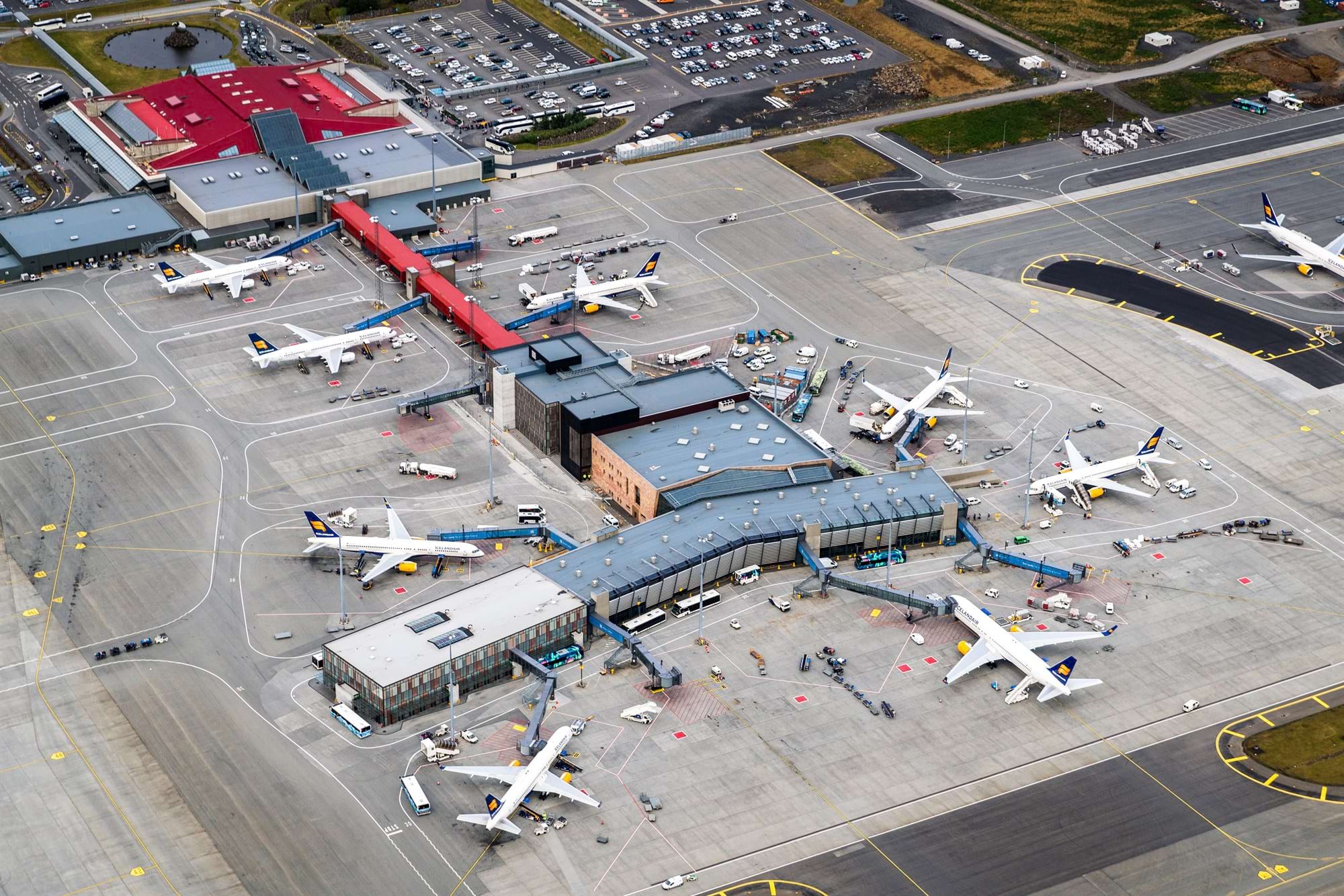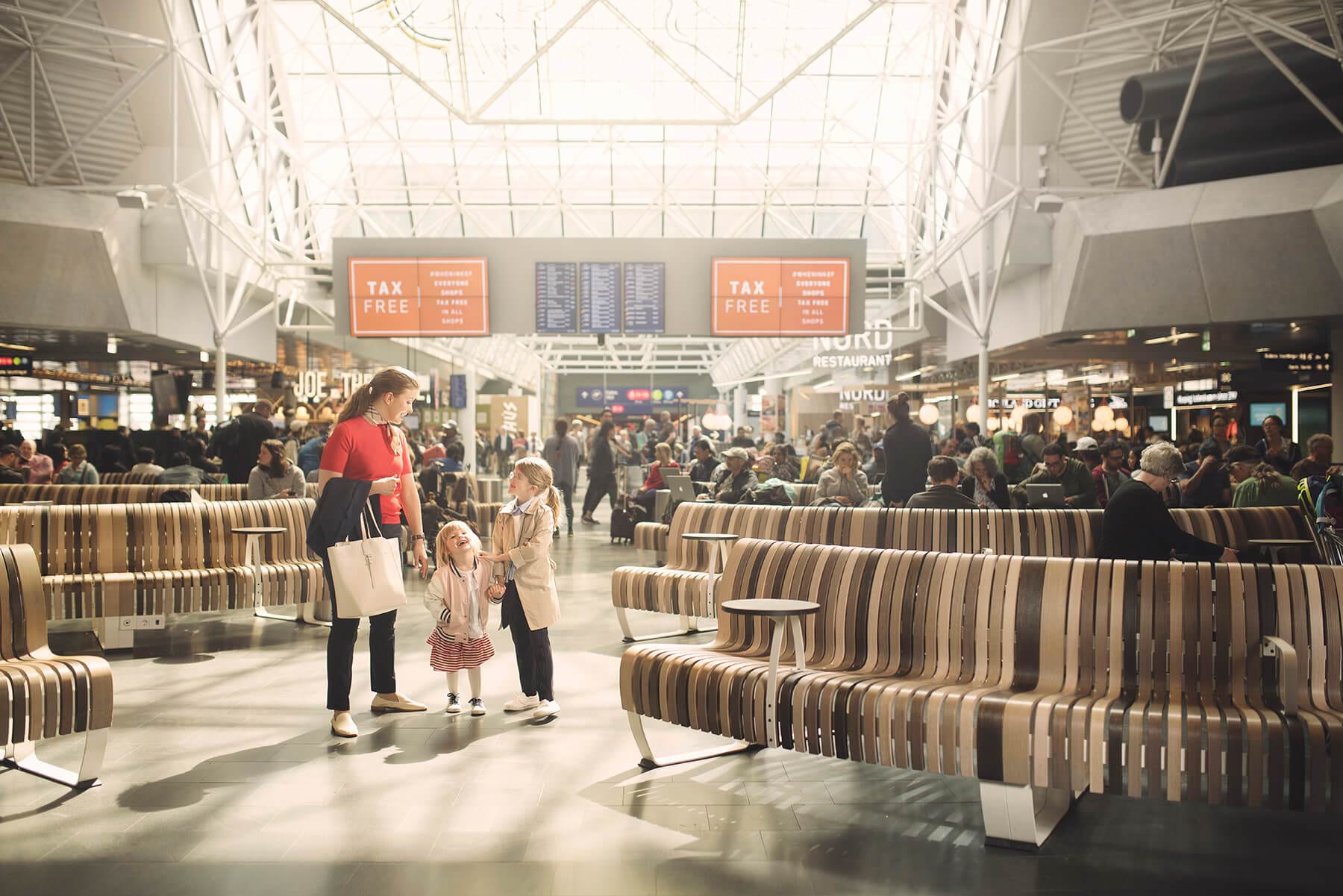History of Keflavík International Airport
Keflavík International Airport is Iceland's primary transport hub, with millions of passengers arriving every year to explore the "Land of Fire and Ice".
For most visitors, Keflavík and the rugged Reykjanes peninsula where it's located offer the first sight of Iceland, the gateway to a magical realm of natural marvels and spectacular scenery.
Like the country it serves, the airport at Keflavík has a fascinating history, including a vital role in the Second World War and the subsequent development of Iceland as a modern society and strategically important nation.
So, let's learn a bit more about the history of Keflavíkurflugvöllur, otherwise known as Keflavík International Airport!

Early Icelandic aviation
Before the Second World War, Icelandic aviation was limited to a handful of seaplanes visiting from overseas and small aircraft used for local flights.
The Graf Zeppelin visited Reykjavík from Germany in 1930, triggering great interest in people taking to the skies.
But it wasn't until 1937 that Iceland's national airline (Flugfélag Akureyrar), the forerunner of Icelandair, was set up in Akureyri on Iceland's north coast.
Flights began in 1938, with the airline relocating to Reykjavík in 1940 and operating scheduled services to towns around Iceland.
Ever resourceful, Icelanders used the planes to spot valuable herring shoals from the sky, steering fishing boats to the best spots!
Wartime Developments
The Second World War put Iceland on the map for the Allies, with the British particularly concerned about the potential threat to its vital transatlantic convoys if the Germans took possession of the country.
The British sent naval vessels and army units to occupy Iceland in May 1940, quickly establishing bases around the capital and building roads and other infrastructure.
At this point, Iceland was negotiating its independence from Denmark, so this new occupying force from Britain was unwelcome initially.
However, the significant benefits of these military construction projects, including employment opportunities for the locals and a boost to the Icelandic economy, soon became apparent.
Before the occupation, Iceland was amongst the poorest nations in Europe, but after the war, it was in a far better economic position.
Some Icelanders call this period the "Blessed War" because of its positive impact on Icelandic society.
Constructing an airstrip on the Reykjanes peninsula was critical to British strategy, placing Allied aeroplanes in prime positions to intercept enemy submarines and aircraft.
The British initially built an airbase at Garður, about 10 kilometers from the modern-day Keflavík International Airport site, right on the northern tip of the Reykjanes peninsula.
As the war progressed, the USA took over the military occupation of Iceland from Britain in July 1941, with President Franklin D. Roosevelt specifically seeking the agreement of the Icelandic government, which remained a neutral country in the conflict.
The Americans quickly set about building a new base with greater capacity than the British landing strip, with two separate two-runway airfields constructed about four kilometers apart.
Patterson Field began operations in 1942, and Meeks Field followed in March 1943, with both bases named in honor of American pilots who had perished on active service in Iceland.
These two bases played a crucial role in the Battle of the Atlantic, preventing German forces from deploying their submarines effectively in the area.
Patterson Field ceased operations after the Second World War, but Meeks Field was returned to Icelandic control and renamed Naval Air Station Keflavik after the nearest town on the peninsula.
In 1946, the Keflavík Agreement was signed, which stated that American forces would leave Iceland and cede control of the airport. This took much longer than expected to achieve!
The postwar reconstruction of Europe (the Marshall Plan) saw Iceland receive $43 million, primarily set aside for infrastructure projects.
The Cold War
As tensions rose between the superpowers in the postwar period, the US military signed a new agreement with the Icelandic government to re-establish a strategic airbase at Keflavík in 1951.
Iceland was a founding member of NATO, the North Atlantic Treaty Organization, but did not have its own military forces, so the Americans took on the role of defending the country from potential aggressors.
To this day, Iceland has no standing army, air force or army units.
The Icelandic Coast Guard (Landhelgisgæsla Íslands) is solely responsible for search and rescue, maritime safety, surveillance, law enforcement and border controls.
Many Icelanders did not approve of the US presence at Keflavík despite its vital importance to NATO strategy, particularly for monitoring and interception of Soviet military movements in the "Greenland-Iceland-UK gap".
Around this time commercial flights began arriving in Iceland in the late 1940s. Iceland's mid-Atlantic location made it the perfect place for refueling propellor-powered passenger planes between America and Europe.
The "Jet Age" vastly increased the range of commercial airliners, so long-haul flights no longer needed to refuel in Iceland.
The first Icelandair passenger jet plane was a Boeing 727-100C, which started service in 1967.
Iceland was now firmly on the aviation map, with Keflavík established as an important transit hub and the country itself beginning to be considered a tourist destination in its own right.
Future Developments
Over the years, the airport was gradually modernized and enlarged, with more passenger facilities added, alongside improved runways and taxiways.
Despite the benefits of having an international airport and more connections with the outside world, some Icelanders continued to object to the presence of a foreign military power in the country.
Opposition to the Vietnam War in the 1960s and 1970s led to growing protests, including marches along the 50-kilometer route between the capital and the military base at Keflavík.
Chants of "Ísland úr NATO, herinn burt" (Iceland out of NATO, the military away) were heard on the capital's streets and elsewhere around the country. Still, the Icelandic government continued to support the presence of the base.
The Leif Erikson Air Terminal
During the 1950s, travelers had to pass through military checkpoints to board their flights, as commercial flights were operating in the middle of a secure military zone!
This extra layer of security lasted until April 1987, when the civilian flights were relocated to the new Leif Erikson Air Terminal, which had taken four years to build.
The terminal was named after the famous Norse explorer, who is thought to have been the first European to reach North America, some five hundred years before Columbus arrived there.
Keflavík's two runways are 3,000 meters long and 60 meters wide, capable of supporting the largest planes operating today.
This makes the airport a vital part of transatlantic safety protocols, with Keflavík providing an emergency landing runway facility for intercontinental flights.
The iconic supersonic airliner Concorde visited Keflavík from Heathrow in June 1999.

Into the 21st century
The Leif Erikson Air Terminal was expanded in 2001 with the opening of the "South Building", which enabled the airport to comply with the passenger processing requirements of the Schengen Agreement.
As the Cold War ended, the US military presence in Iceland was slowly reduced until a final departure on September 30th, 2006.
This enabled Keflavík airport to expand and develop its commercial operations and increase its passenger capacity, boosted by the opening of the North Building in 2007 when additional services and lounges were opened.
However, the volcanic eruption at Eyjafjallajökull on Iceland's South Coast in 2010 triggered the most significant boost for Icelandic aviation, focusing the world's attention on the skies above the country.
For several days in April 2010, commercial flights across the Atlantic were grounded by the enormous volcanic ash clouds spilling into the air above Iceland.
The towering ash plumes posed a potentially serious safety risk to jet engines and reduced visibility on international flight paths.
The dramatic scenes were screened across the world's TV news channels for days, providing Iceland with countless hours of free advertising and marketing.
Suddenly, Iceland was a place that people wanted to visit!
Following the difficult days of the 2008 economic crisis, this was just the boost Iceland needed, and the country soon welcomed new visitors in record numbers.
Keflavík International Airport has kept pace with demand, handling millions of visitors yearly with continual improvements and expansions to the main terminal, parking zones and passenger support services.
The leading airline at Keflavík is the country's "flag carrier" Icelandair, with additional flights offered by a budget Icelandic airline called Play.
More than twenty international airlines, including Delta, Lufthansa and British Airways, operate regular scheduled flights to Keflavík.
The airport is operated by Isavia, an Icelandic government agency, which is considering plans for a 49-kilometer railway to link the airport to the capital – this would be Iceland's first railway!
Safety
There have been only three notable incidents at Keflavík International Airport.
- July 2013: a Russian Sukhoi Superjet 100 airliner made a belly landing during a test flight, with no injuries, following a crew error
- April 2017: a Primera Air Boeing 737-800 skidded during landing; all passengers and crew were safe
- February 2020: an Icelandair Boeing 757-200 lost its right landing gear during touchdown, with no injuries
Award-winning Airport
From its origins as a muddy wartime airstrip, Keflavík has evolved, expanded and established itself as one of the world's finest airports of its size.
The Airports Council International (ACI) named Keflavík Airport one of Europe's best airports for customer experience in 2024, for the sixth year in a row.
When you visit the "Land of Fire and Ice", you'll enjoy finding out why!